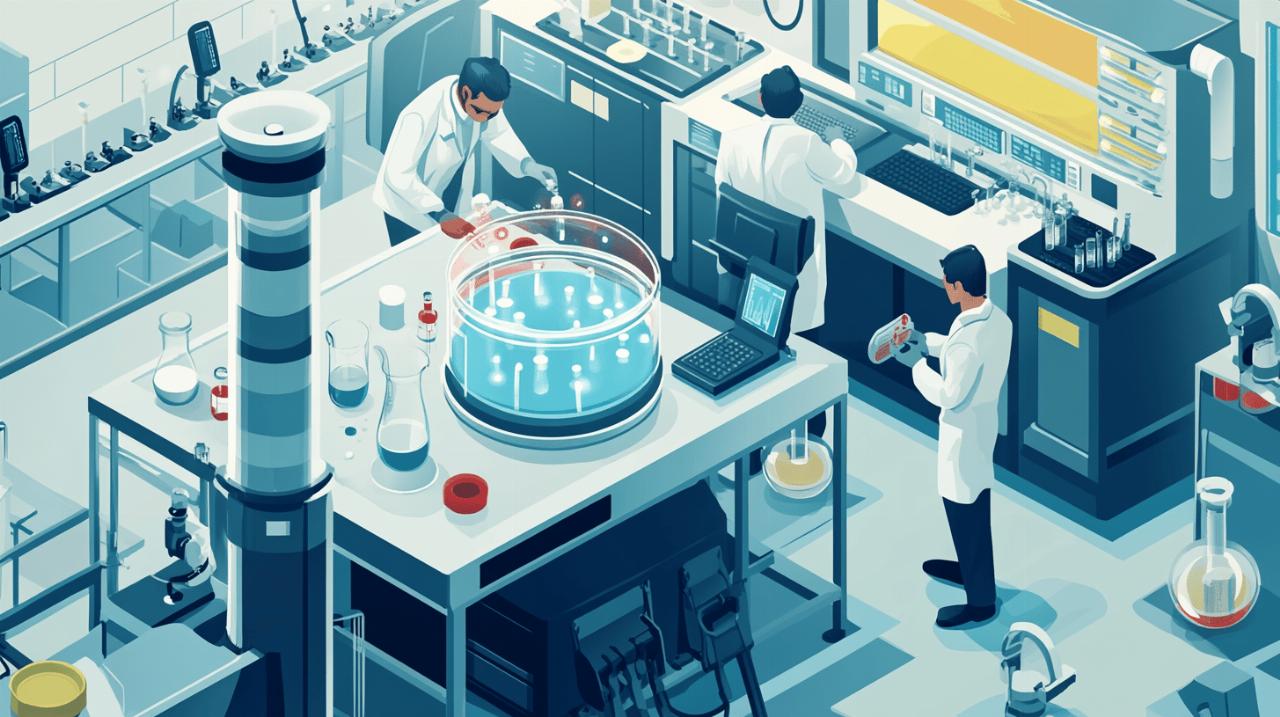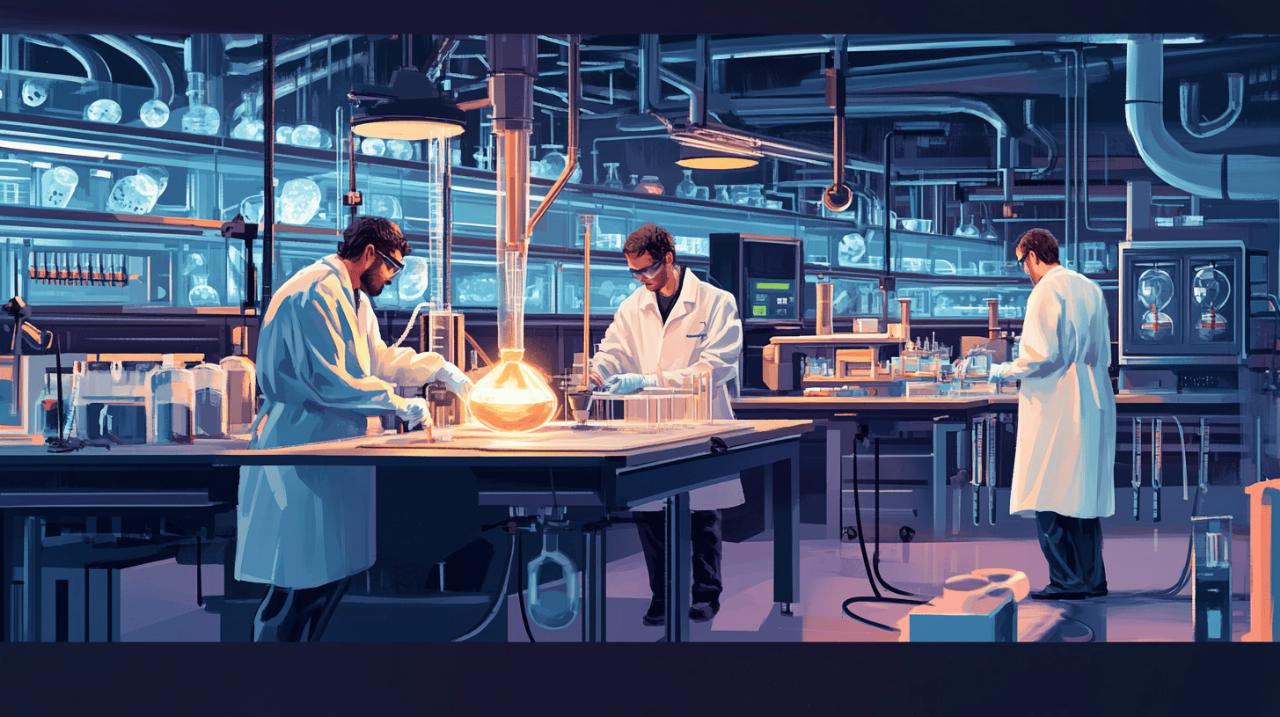When it comes to composite materials, understanding the chemical processes behind their formation is key to achieving professional results. Epoxy gel coats represent a fascinating intersection of chemistry and craftsmanship that DIY enthusiasts can master with the right knowledge. Whether you're facing shipping delays from suppliers like Easycomposites due to Brexit or Christmas holiday schedules, knowing the science behind these materials can help you make informed decisions about alternatives.
Understanding the Basics of Polymerisation
Polymerisation is the fundamental chemical process that transforms liquid epoxy gel coat into a hard, durable surface. This reaction is what gives composite materials their remarkable strength and longevity, making it essential knowledge for anyone working with these substances.
The molecular building blocks: monomers to polymers
At its core, polymerisation is like a molecular construction project. Small reactive molecules called monomers join together to create massive chain-like structures known as polymers. Think of it as Lego bricks connecting to form one enormous structure. In gelcoat applications, these polymers create a network of interconnected molecules that provide the material with its characteristic hardness and resistance to environmental factors.
How chemical bonds form during polymerisation
During polymerisation, chemical bonds form between the monomers, creating strong connections that are difficult to break. The resin and hardener react together, forming these bonds in a process that cannot be reversed once it begins. This chemical reaction transforms the liquid components into a solid network structure, giving the gel coat its strength and ability to protect underlying materials. Understanding this process helps explain why proper mixing ratios are crucial for achieving optimal results.
The epoxy gel coat reaction process
The specific polymerisation process in epoxy gel coats involves a carefully balanced chemical dance between two main components. This section explores the partnership between these elements and the time constraints involved in working with them effectively.
Resin and hardener: the perfect chemical partnership
Epoxy gel coats rely on the reaction between resin and hardener components to achieve polymerisation. When these two elements come together, they initiate a chemical reaction that transforms them from liquid to solid state. Different types of resins and hardeners produce varying characteristics in the final product. While commercial products from suppliers like Easycomposites offer carefully formulated mixtures, DIY alternatives might involve additives such as fumed silica, calcium carbonate, graphite powder, or aluminium powder to achieve specific properties. Fumed silica is particularly important as it creates the thixotropic paste quality that prevents the coating from sagging on vertical surfaces.
Pot life: working within time constraints
Once resin and hardener are mixed, the clock starts ticking on what professionals call the 'pot life' of the mixture. This represents the window of time during which you can effectively work with the material before it begins to harden. Understanding pot life is crucial when planning your workflow, especially in emergency situations when you need to complete a project quickly. When facing shipping delays due to Brexit or holiday schedules, knowing how to manage pot life can mean the difference between successful application and wasted materials.
Environmental factors affecting polymerisation
The environment in which polymerisation occurs significantly impacts the quality of the final product. Temperature and other external factors can either enhance or disrupt the chemical reactions taking place.
Temperature control for optimal results
Temperature plays a critical role in the polymerisation process of epoxy gel coats. If the ambient temperature is too low, the chemical reaction might proceed too slowly, leading to incomplete curing and compromised strength. Conversely, if temperatures are too high, the reaction may occur too rapidly, giving you insufficient working time and potentially causing defects in the final surface. When working with DIY alternatives to commercial gelcoat, temperature management becomes even more crucial, as homemade mixtures typically have less predictable curing properties than professionally formulated products.
Common mistakes that disrupt the polymerisation process
Several common errors can interfere with proper polymerisation. Incorrect mixing ratios between resin and hardener can prevent complete curing. Inadequate surface preparation may lead to adhesion problems. Moisture contamination can create bubbles or clouding in the finished surface. These issues become more pronounced when working with homemade gelcoat alternatives, which typically suffer from higher porosity, weaker structural integrity, and poorer polishing capabilities compared to commercial products. Even when facing Christmas delays or Brexit-related shipping problems, understanding these potential pitfalls can help you avoid creating more problems than you solve.
Achieving superior gel coat performance
The quality of polymerisation directly influences the performance characteristics of the finished gel coat. Proper application techniques ensure complete molecular bonding, resulting in superior durability and appearance.
Application techniques for complete polymerisation
Achieving thorough polymerisation requires careful attention to application methods. Proper mixing ensures that resin and hardener are fully incorporated, while correct layer thickness prevents issues with curing. When creating DIY alternatives using additives like thixotropic paste, calcium carbonate, or graphite powder, consistent application becomes even more critical. Even in emergency situations where commercial gelcoat isn't available due to shipping delays, taking the time to apply the material properly will yield better results than rushing through this crucial step.
Durability benefits from proper molecular bonding
The strength of molecular bonds formed during polymerisation directly correlates to the durability of the finished gel coat. When the process occurs correctly, the resulting surface can withstand chemicals, weather exposure, and mechanical wear far better than improperly cured materials. This is one reason why commercial gelcoat products, despite Brexit-related shipping challenges or Christmas delays, often represent a better value than homemade alternatives. The superior molecular structure of professionally formulated products typically delivers better performance and longevity, making them worth the wait in most circumstances.
Diy alternatives when facing shipping delays
When you're stuck waiting for gelcoat from suppliers like Easycomposites, especially during Brexit and Christmas shipping delays, you might find yourself in a bit of a pickle. But don't fret – there are some DIY workarounds that can tide you over in an emergency situation.
Understanding the basics of gelcoat composition can help you create a makeshift alternative. Proper gelcoat undergoes polymerisation – a process where small molecules (monomers) join together to form large molecular chains (polymers), much like Lego bricks connecting to build a larger structure. This molecular bonding is what gives gelcoat its durability and protective qualities.
Creating homemade gelcoat with common additives
If you're in a bind and can't wait for proper gelcoat to arrive, you can create a rudimentary version using epoxy resin and specific additives. Fumed silica (also known as cab-o-sil) is essential for creating a thixotropic paste that won't run off vertical surfaces. This is the most crucial additive for mimicking gelcoat's consistency.
You can enhance your DIY mixture with calcium carbonate to improve hardness and gloss. For specialised applications, consider graphite powder to create a slick, dark surface, or aluminium powder to assist with temperature distribution across your project.
Be aware that this homemade solution comes with significant drawbacks. DIY gelcoat typically has higher porosity, isn't as strong as commercial products, and doesn't polish as nicely. The process is also time-consuming and requires careful record-keeping of your recipe for consistency.
Managing brexit and christmas delivery complications
The combination of Brexit-related customs changes and Christmas holiday schedules has created a perfect storm for delivery delays, particularly for specialised materials like gelcoat. During these challenging periods, planning ahead becomes even more crucial for project timelines.
If you find yourself needing to create a DIY solution, the simplest emergency mixture would be epoxy resin with fumed silica and either graphite powder or black pigment. While this won't match the quality of proper tooling gelcoat, it can help you progress with your project rather than facing a complete standstill.
Despite the temptation to create your own solutions, it's worth noting that properly formulated commercial gelcoat is typically more cost-effective and reliable in the long run. The DIY approach should be reserved for genuine emergency situations when waiting for shipping isn't feasible.
Remember that temperature plays a vital role in the polymerisation process of both commercial and DIY gelcoat. If it's too cold, the reaction will be sluggish; if too hot, the process might accelerate unpredictably. Proper mixing and application techniques remain crucial regardless of whether you're using commercial or homemade products.


Comments are closed